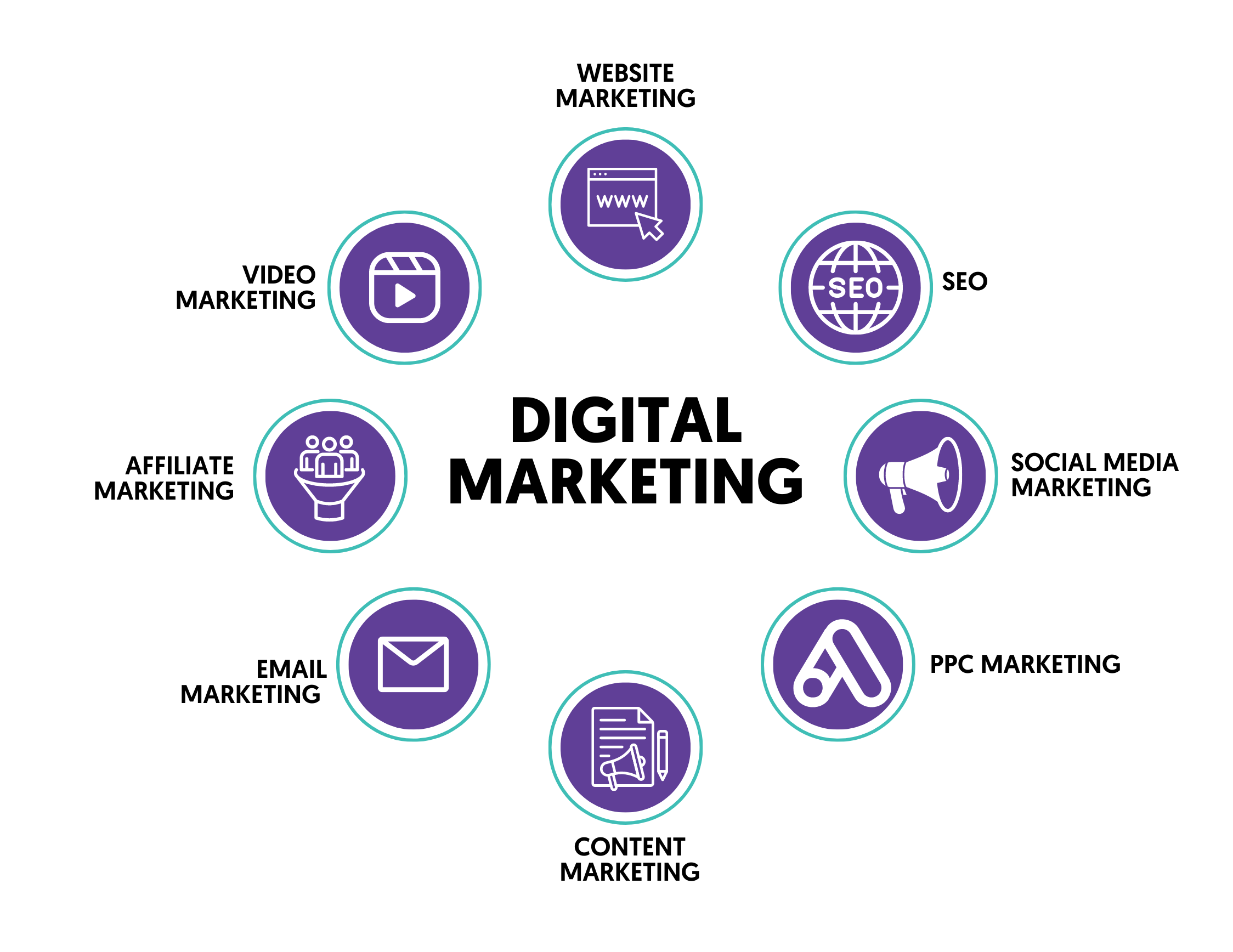Discover Just How Digital Marketing Lockhart Drives Long-Term Business Growth
Transform Your Organization With Data-Driven Digital Marketing
In today's rapidly advancing industry, leveraging data-driven digital marketing has ended up being necessary for businesses intending to improve their competitive side. By employing analytics to get insights into consumer actions, companies can customize their marketing strategies for maximum impact.
Understanding Data-Driven Advertising
Data-driven advertising is increasingly acknowledged as an essential technique for organizations intending to enhance their advertising efficiency. This methodology depends on the methodical collection, evaluation, and application of data to inform advertising techniques and decisions. By leveraging different data sources, consisting of client demographics, actions patterns, and market patterns, services can develop targeted projects that resonate with details audiences.
At its core, data-driven marketing includes incorporating analytics right into the advertising and marketing procedure. This permits real-time understandings right into campaign efficiency, enabling marketers to make enlightened adjustments and enhance their strategies. By understanding customer preferences and interaction degrees, companies can craft individualized messaging that is more likely to transform potential clients into devoted customers.
Additionally, data-driven marketing cultivates a culture of liability within companies. Marketing experts can track their return on investment (ROI) and examine the performance of various channels, such as social media, e-mail, and search engines. This analytical approach not only boosts decision-making however additionally encourages constant improvement in marketing techniques as companies improve their techniques based upon empirical proof. As organizations welcome data-driven advertising and marketing, they position themselves to react effectively to changing market dynamics and consumer expectations.
Benefits of Data Analytics

One of the key benefits is the capacity for individualized advertising. Data analytics enables organizations to sector their audience effectively, tailoring messages and uses that reverberate with certain groups. This degree of personalization not only boosts involvement rates yet additionally fosters brand name loyalty.
In addition, data analytics facilitates real-time decision-making. Online marketers can monitor campaign efficiency constantly, changing methods based on prompt feedback and outcomes. This agility results in optimized source allotment and improved roi.
Furthermore, anticipating analytics empowers services to anticipate future fads and consumer demands, enabling for aggressive methods instead of responsive steps. This foresight can be a significant affordable advantage in today's dynamic market landscape.
Key Devices and Technologies

Among the key innovations is Client Relationship Administration (CRM) software program, which enables services to handle customer communications and analyze information throughout the customer lifecycle. Furthermore, marketing automation platforms streamline repetitive jobs, promoting individualized interaction and lead nurturing.

Information visualization devices, such as Tableau and Google Information Workshop, assistance professionals translate intricate information collections, offering understandings in a conveniently absorbable format. Additionally, analytics systems like Google Analytics supply vital metrics on website web traffic and user habits, making it possible for marketing experts to enhance their approaches.
Social network analytics tools, such as Hootsuite and Sprout Social, offer understandings right into audience involvement and material performance across numerous systems. A/B screening devices, like Optimizely, allow marketing experts to experiment with different strategies, making certain that data-driven decisions are continually refined. By leveraging these technologies, organizations can cultivate a data-centric culture, bring about a lot more efficient electronic advertising projects.
Applying Efficient Strategies
To effectively implement efficient techniques in electronic advertising, companies must initially straighten their objectives with workable understandings see this obtained from data analytics. This positioning makes it possible for companies to customize their marketing initiatives, guaranteeing they resonate with target audiences. By leveraging information from numerous networks, such as social media, email advertising and marketing, and site analytics, business can recognize trends, preferences, and habits that educate their approach.
Next, it is crucial to focus on consumer segmentation. By categorizing their target market based upon demographics, passions, and purchasing habits, organizations can develop customized advertising projects that drive interaction and conversion. Automation devices can promote this process, allowing marketing experts to deliver timely, appropriate material to specific segments.
Furthermore, accepting an active advertising and marketing technique can enhance responsiveness to market adjustments and consumer comments. Routinely assessing project efficiency and making data-driven changes can enhance results and source appropriation.
Lastly, promoting a society of cooperation between marketing, sales, and data analytics teams is important. This multidisciplinary method makes sure that understandings are effectively shared and incorporated right into broader organization techniques, eventually driving continual growth in an affordable landscape.
Gauging Success and ROI
How can organizations efficiently gauge success and roi (ROI) in digital marketing? The answer depends on developing clear goals and using the appropriate metrics. Start by specifying crucial efficiency indicators (KPIs) that straighten with company goals, such as conversion rates, consumer procurement expenses, and engagement metrics. These KPIs supply a measurable basis for examining the performance of digital advertising initiatives.
Using analytics tools is essential in this procedure. Systems such as Google Analytics and social media insights permit organizations to track customer behavior and helpful site project efficiency in real time. By examining data, organizations can determine which strategies produce the most effective outcomes and allocate resources as necessary.
Furthermore, employing ROI calculations can provide a more clear photo of financial performance (Digital Marketing Lockhart). This consists of determining the earnings produced from digital marketing efforts versus the complete costs incurred. An uncomplicated formula is (Net Profit/ Expense of Investment) x 100 to determine the ROI portion
Inevitably, a thorough approach that combines measurable and qualitative evaluation will certainly allow companies to examine their electronic here are the findings advertising and marketing success properly and make educated choices for future projects. This data-driven attitude is critical for continuous enhancement and lasting development.
Conclusion
In conclusion, the assimilation of data-driven digital advertising and marketing stands for a transformative technique for services seeking to improve interaction and foster brand name loyalty. By leveraging analytics to educate strategies, companies can enhance resource allocation, adapt to market characteristics, and enhance roi. The application of vital tools and technologies additionally facilitates this procedure, making sure that advertising and marketing initiatives are straightened with customer habits and expectations. Inevitably, accepting data-driven methodologies is essential for continual competitive advantage in a quickly progressing landscape.
In today's swiftly developing marketplace, leveraging data-driven electronic advertising and marketing has actually become crucial for companies intending to improve their competitive side (Digital Marketing Lockhart).Data-driven advertising and marketing is progressively identified as an essential strategy for companies intending to boost their marketing performance.At its core, data-driven advertising and marketing involves incorporating analytics right into the advertising and marketing process. As businesses welcome data-driven advertising, they place themselves to react efficiently to changing market dynamics and consumer assumptions
In verdict, the integration of data-driven electronic advertising and marketing represents a transformative method for services looking for to boost interaction and foster brand commitment.